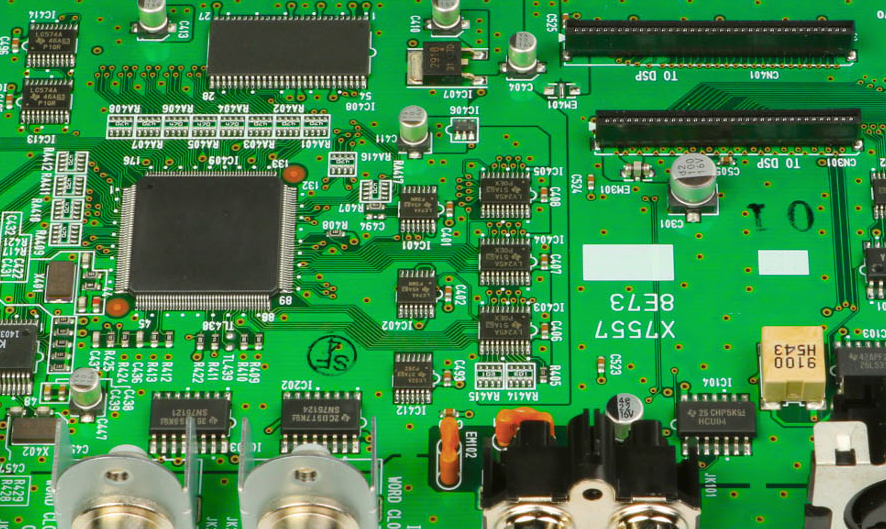Do you know that there are several commonly used over-hole processing methods for PCB production? What are they called?
(1) soldermask ink-covered vias
(2) soldermask ink plugging
(3) Resin plugging
(4) Copper paste plugging
Is it possible to punch a hole in a pad? Yes, of course it can, however, it is important to choose the appropriate hole plugging method to avoid the SMT placement of the monument phenomenon - which refers to the SMT surface mount process of reflow soldering process, the patch components will be due to the warpage of the de-soldering defects. When the design requires hole plugging or does not allow over-the-hole red, and there is a hole in the disk, it is recommended to do resin plugging; when over the hole in the BGA solder joints, it is also recommended to do resin plugging. In the BGA above the hole, generally defined as a hole in the disk, the need to plug the resin, and resin plating above the cap to facilitate product welding; in addition to BGA, when the product requirements of all the holes in the resin plug holes, the patch above the hole, also defined as a hole in the disk.
The role of resin plugging holes
(1) can eliminate impurities into the conduit hole, or avoid the involvement of corrosion impurities.
(2) By patching the design over the hole, higher-density wiring can be realized.
(3) Resin filling can avoid surface depression problems caused by insufficient filling of laminated flow rubber, which is conducive to fine line production and characteristic impedance control.
(4) After resin fills various blind buried holes, the vacuum drop of lamination is favorable.
(5) Effective use of three-dimensional space, through the hole stacking technology, to achieve any interconnection between layers.

Resin plug holes are made of a range of capabilities: hole size is generally 0.1-0.8mm; plate thickness ranges between 0.4-8.0mm.
The types of plug holes are buried holes, blind holes, through-hole plug holes, insulating resin plug holes, and conductive resin plug holes.
Resin plug holes, no longer do VIA solder resist plug holes, resin plug holes correspond to the solder resist window according to the original document (if the whole board irregular holes have windows, need to confirm in advance whether to delete).
Resin plug holes in the layer line, you need to compensate for 1.5-2 mil, as much as possible.
Resin plug hole holes need to do a plug hole drilling band, then plug the hole diameter of the whole 0.15mm. When the hole in the disk is a blind hole, the need for resin plug holes, just copy the blind holes to another layer to increase the 0.15mm; The hole in the disk is a blind hole is, at the same time through-hole is also a hole in the disk, all the holes in the disk to be picked out to do the resin plug holes, do not ignore the holes on the BGA is not to do the resin plug holes.
Resin plugging process (through-hole)
Opening → drilling → copper sinking → board electricity → board electricity (thickened copper) → resin plug holes → grinding → outer graphics → graphics plating → etching → solder resist > surface treatment → molding > electrical testing → FQC → shipment
PCB resin plugging hole production process: first drill holes, and then plate through the hole, then plug the resin for baking and finally grinding (smoothing). After being smoothed the resin is not copper, but also needs to degree a layer of copper up to turn it into PAD, the first to plug holes in the holes to deal with, and then drill other holes.
Via in PAD plating → grinding plate → mounting aluminum, pads → test printing film alignment → test printing → production line self-test OK → mass production → segment curing → IPQC sampling → ceramic grinding plate
The pad to dissipate heat, often has a hole, to prevent the solder from the pad flow to the following layer, the hole is to do the resin plug-hole processing, you can make the hole plug holes to achieve a full, improve the benefits of product life. To prevent the solder from flowing from the pad to the following layer, do the resin hole plugging treatment to the hole, which can make the hole plugging achieve more fullness and improve the product life.